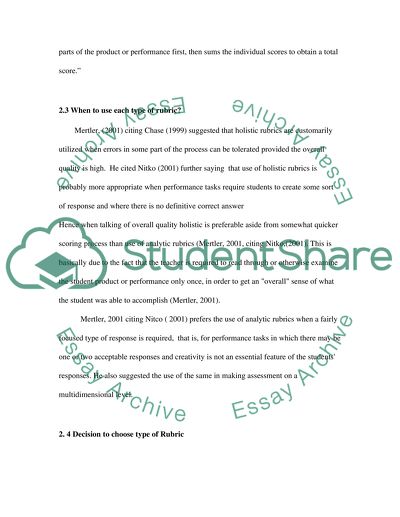Cite this document
(“Rubrics In Evaluating Student Works Case Study Example | Topics and Well Written Essays - 1750 words”, n.d.)
Rubrics In Evaluating Student Works Case Study Example | Topics and Well Written Essays - 1750 words. Retrieved from https://studentshare.org/education/1509204-create-a-scoring-rubric-for-an-essay-exam
Rubrics In Evaluating Student Works Case Study Example | Topics and Well Written Essays - 1750 words. Retrieved from https://studentshare.org/education/1509204-create-a-scoring-rubric-for-an-essay-exam
(Rubrics In Evaluating Student Works Case Study Example | Topics and Well Written Essays - 1750 Words)
Rubrics In Evaluating Student Works Case Study Example | Topics and Well Written Essays - 1750 Words. https://studentshare.org/education/1509204-create-a-scoring-rubric-for-an-essay-exam.
Rubrics In Evaluating Student Works Case Study Example | Topics and Well Written Essays - 1750 Words. https://studentshare.org/education/1509204-create-a-scoring-rubric-for-an-essay-exam.
“Rubrics In Evaluating Student Works Case Study Example | Topics and Well Written Essays - 1750 Words”, n.d. https://studentshare.org/education/1509204-create-a-scoring-rubric-for-an-essay-exam.


